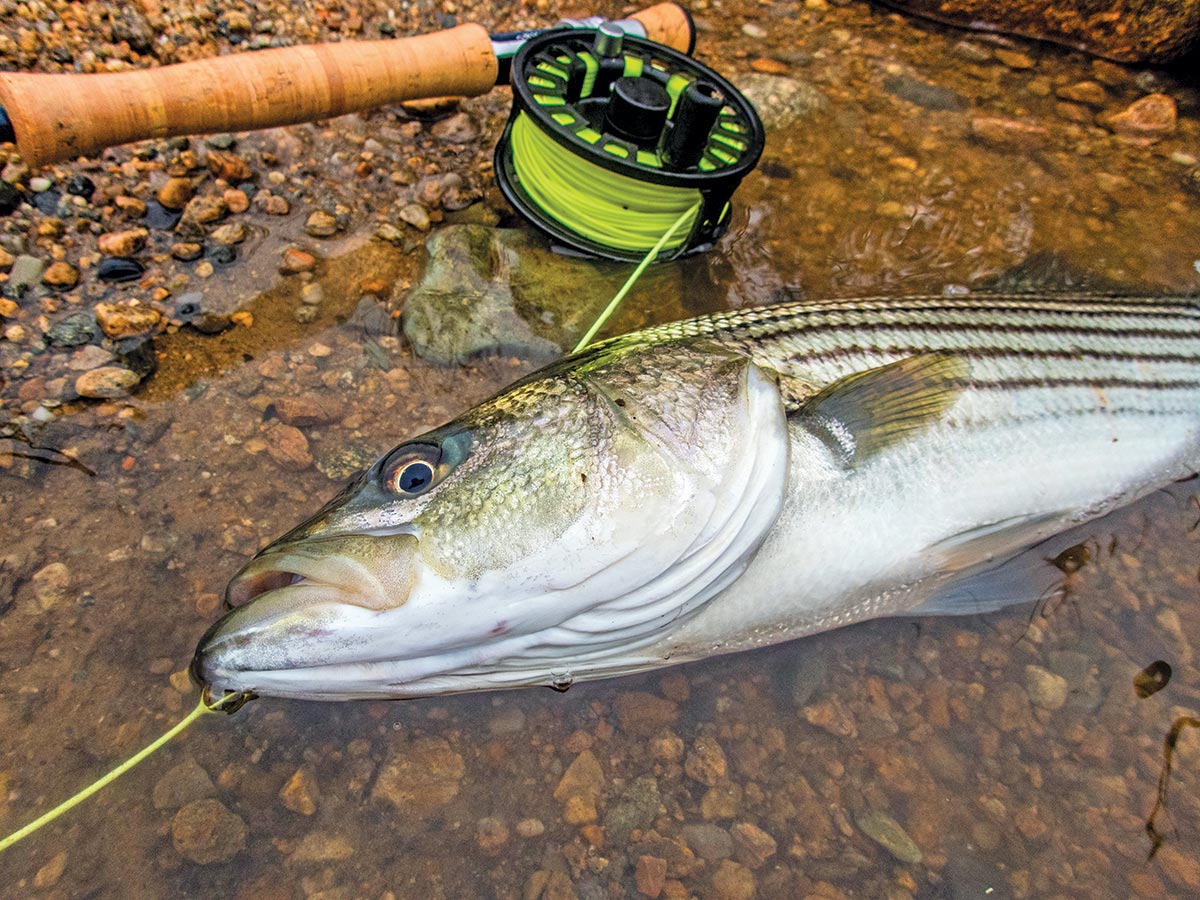
Often relegated to open surf and back bays, fly fishing is extremely effective in strong-running shoreline current.
Fly fishing is full of stigma and assumptions. I believe most fishermen think of it as something used to catch fussy trout with tiny dry flies by older gentlemen smoking pipes.
However, fly fishing is just another technique. It’s a tool, and there are no rules. In many situations an adequately prepared and skilled fly fisherman can catch the same fish an individual using lures can—salt or fresh. It is often more challenging, I will not deny that. However, on the flip side, it can be almost impossible for conventional tackle to replicate many of the techniques a fly fisherman can implement.
What is least appreciated about fly fishing in the saltwater inshore environment in my opinion (even by many individuals who fly fish) is how effective it can be in moderate-to-strong currents, day or night. In something like a river or estuary mouth, breachway, or moderately-sized inlet most lure fishermen deliver their offering in one of two ways. First, they may cast straight out with the current and then slowly work it back to them. The second method—which I prefer—is to swing the lure by casting up current and reeling slowly/moderately to keep contact with the plug or jig as it drifts by the angler.
You can do both of those methods with a fly rod easily. But what happens if the fish are on tiny bait? Or if they are extremely fussy and wary of leaders, hooks, or other imperfections in a traditional lure or jig? This is where fly fishing can have the edge. The ability to present very small and/or extremely realistic drifted artificials (even huge profiles) is where fly fishing really shines. In fact, fly fishing has an increased ability to “dead stick” over a conventional lure—just let it drift with no resistance—while also continuing to have it look like alive. This is because even though you are not pulling on the line—where you would give it action if it was a traditional lure—the feather, fur, and synthetic materials in a fly continue to move, undulate, and flutter with even the most subtle water movements. This is an ultra-realistic presentation and I have had some phenomenal nights out-fishing conventional tackle this way.
In moderate currents, like something found at a small river or estuary mouth, I use intermediate lines and unweighted flies like a Lefty’s Deceiver or Puglisi Peanut Butter. However, sometimes you have to get down a little deeper and using a Clouser Minnow can be extremely productive. In fact, the Clouser is an absolute essential fly in any current situation. They are the bucktail jig of the fly fishing world, and come in virtually every size and color. In strong currents, you often need either a sinking/intermediate combination or a full sinking line. I really do not like full sinking lines, as they are cumbersome to use. However, it all depends on what the fish behavior is at the time—if you have to get near the bottom, it may be the only way.
I tend to present my offering pretty similarly regardless of the depth or fly size: cast slightly up current and follow the fly down current with very slow and easy line strips, just keeping up with it. While I fish intermediate lines 80 percent of the time, I usually carry a backup spool with a floating line on it. If fish are “popping” bait on top, floating line makes it very easy to stay right at or near the surface. That’s the great thing about fly fishing—you can dial-in the depth with ultra-precision by making small changes in fly weight, or leader length; or you can make dramatic changes using different line weight and sink rates. The possibilities are almost infinite.




